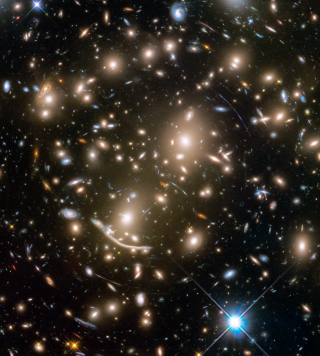Bibcode
Garma-Oehmichen, L.; Cano-Díaz, M.; Hernández-Toledo, H.; Aquino-Ortíz, E.; Valenzuela, O.; Aguerri, J. A. L.; Sánchez, S. F.; Merrifield, M.
Referencia bibliográfica
Monthly Notices of the Royal Astronomical Society
Fecha de publicación:
1
2020
Número de citas
37
Número de citas referidas
34
Descripción
Estimating the bar pattern speed (Ωbar) is one of the main challenges faced in understanding the role of stellar bars in galaxy dynamical evolution. This work aims to characterize different uncertainty sources affecting the Tremaine-Weinberg (TW) method to study the correlation between bar and galaxies physical parameters. We use a sample of 15 MaNGA SDSS-IV galaxies and 3 CALIFA galaxies from Aguerri et al. We studied the errors related with (i) galaxy centre determination, (ii) disc position angle (PA) emphasizing the difficulties triggered by outer non-axisymmetric structures besides the bar, (iii) the slits length, and (iv) the spatial resolution. In average, the PA uncertainties range ̃ 15 per cent, the slit length ̃ 9 per cent and the centring error ̃ 5 per cent. Reducing the spatial resolution increases the sensitivity to the PA error. Through Monte Carlo simulations, we estimate the probability distribution of the R bar speed parameter. The present sample is composed of seven slow, four fast, and seven ultrafast bars, with no trend with morphological types. Although uncertainties and low sample numbers may mask potential correlations between physical properties, we present a discussion of them: we observe an anticorrelation of Ωbar with the bar length and the stellar mass, suggesting that massive galaxies tend to host longer and slower bars. We also observe a correlation of the molecular gas fraction with R, and a weak anticorrelation with Ωbar, suggesting that bars rotate slower in gaseous discs. Confirmation of such trends awaits future studies.
Proyectos relacionados

Evolución de Galaxias en Cúmulos
Las estructuras en el Universo, a todas las escalas de masa, se han formado de una forma jerárquica y principalmente producidas por fusiones de galaxias. Sin embargo, esta formación jerárquica de las galaxias está modulada por el entorno en el cual se crean y evolucionan. Mientras que las galaxias de campo presentan una evolución pasiva, los
Jairo
Méndez Abreu